Panometer Dresden
The Panometer Dresden is a large-scale panorama of the Baroque city. It exists at an interesting intersection of art, history and spectacle.
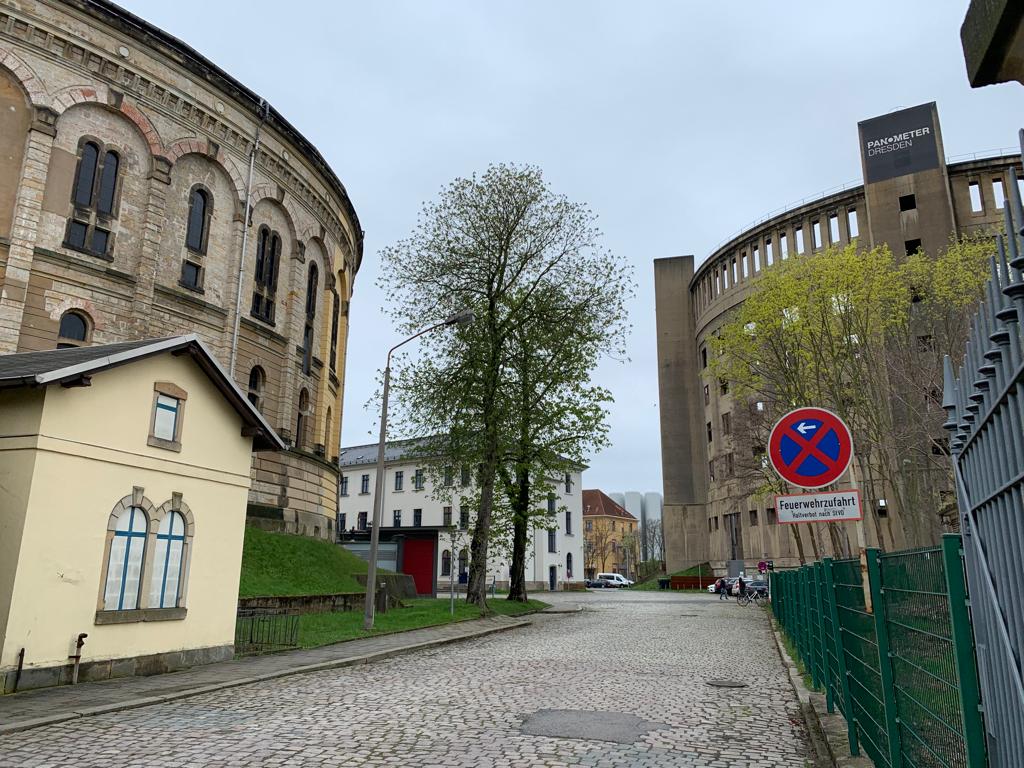
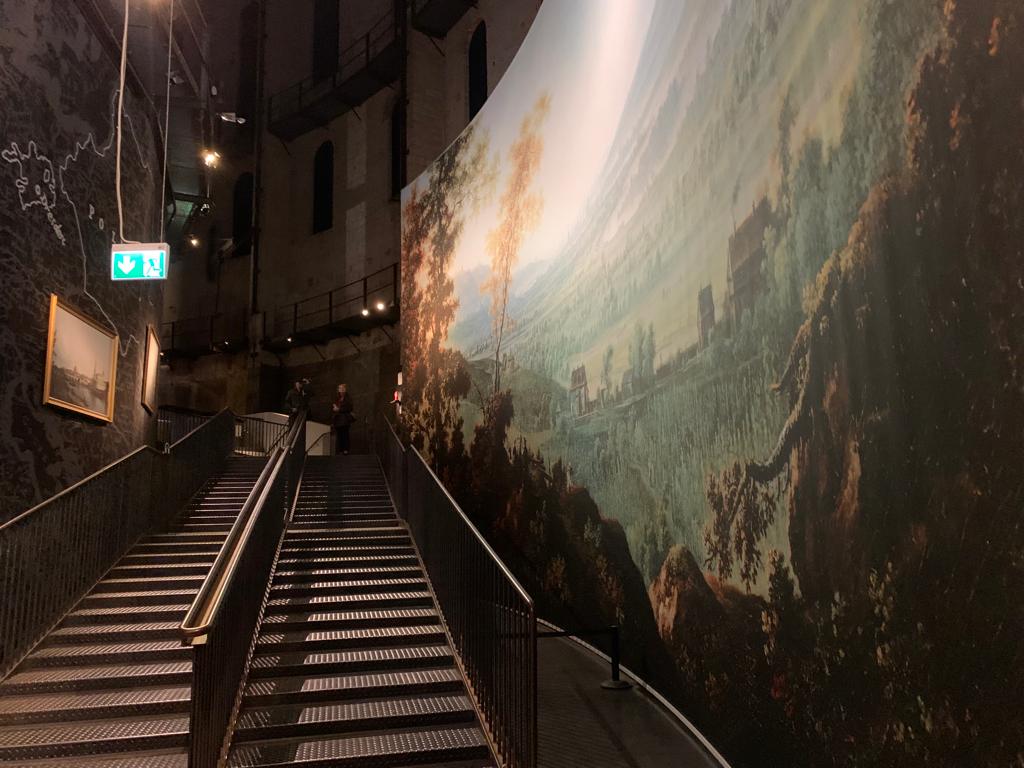
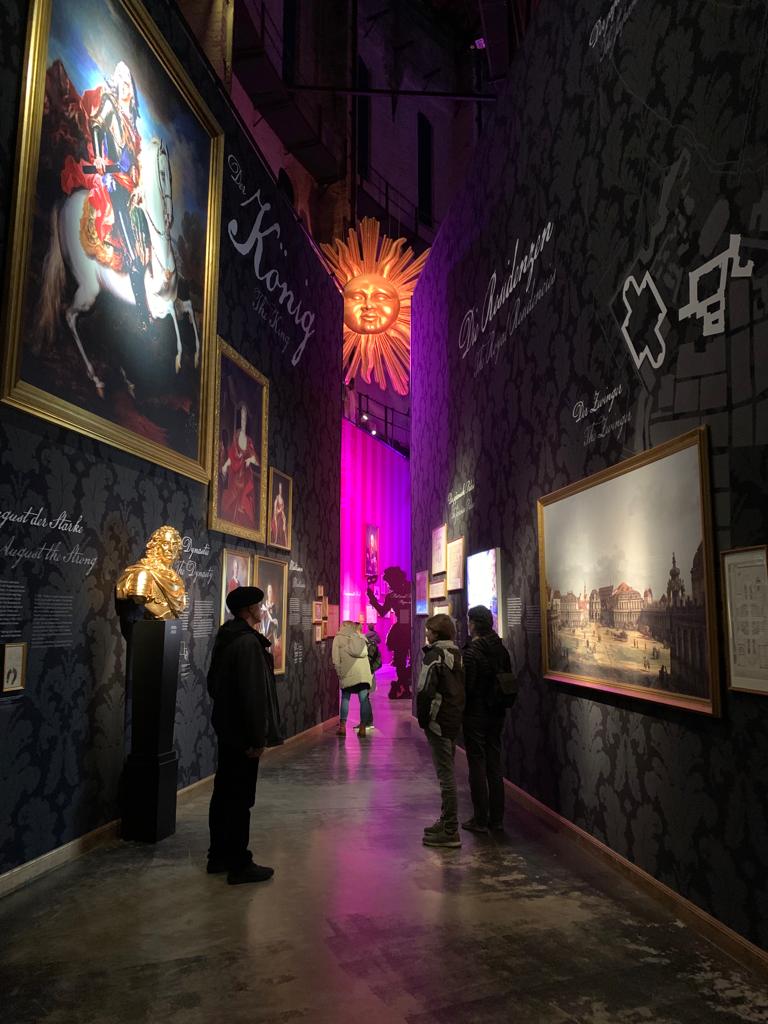
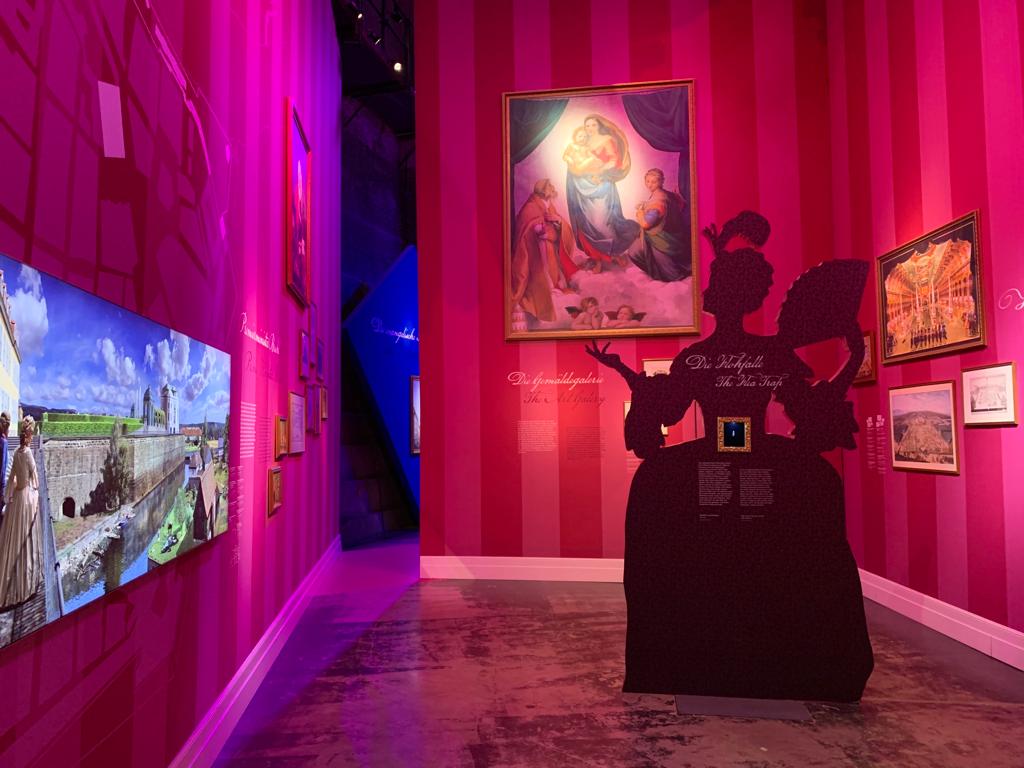
An Unusual Attraction
When I was planning my (very limited) time in Dresden, there was one attraction I was intrigued by, but wasn’t sure I would make it to. The Panometer Dresden is a large-format panorama, contained within a gasometer (Panometer = panorama + gasometer). It’s the work of Austrian-born artist Yadegar Asisi, and not his only Panometer or panorama. But, gasometers being industrial infrastructure with explosive potential, they tend not to be in city centres, so I had to decide whether to make the trip to see it.
If you think the fact that you’re reading a post about the Panometer indicates that I did make the trip, you’d be right. It’s relatively easy to get to using public transport: a few stops on a tram from the Altstadt (Old Town) and then under ten minutes’ walk. Even this short trip shows a different side to Dresden than its Baroque splendour, so is worthwhile from that point of view. And if you’re up for it, a wander through the Grosser Garten (Great Garden) afterwards will bring you back to your starting point.
But what is a Panometer exactly? Well it’s really an updated version of the panorama, a popular visitor attracting dating back to London in 1792. The phrase was coined by Irish painter Robert Barker for his 360 degree view of Edinburgh, which he installed in Leicester Square and charged visitors three shillings to see. Many followed where Barker led, with the format becoming popular across Europe and the US. Some historic panoramas remain in situ, for example the 19th Century Panorama Mesdag in the Hague. Let’s take a closer look now at the Panometer Dresden to see how Asisi has made the format his own.
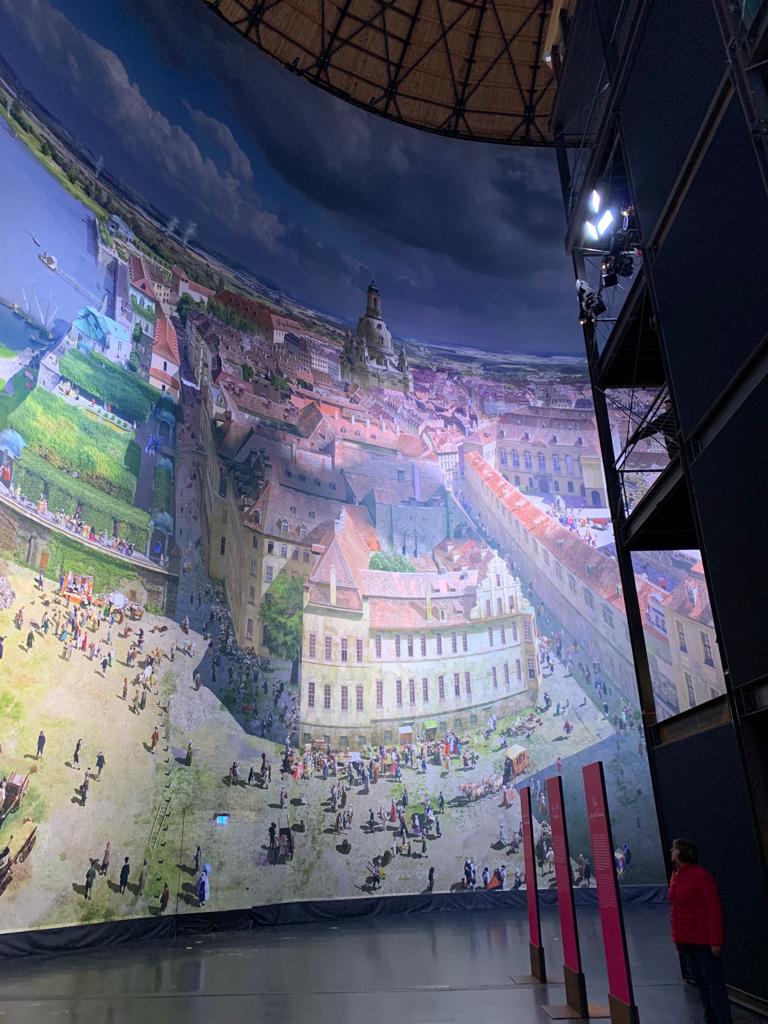

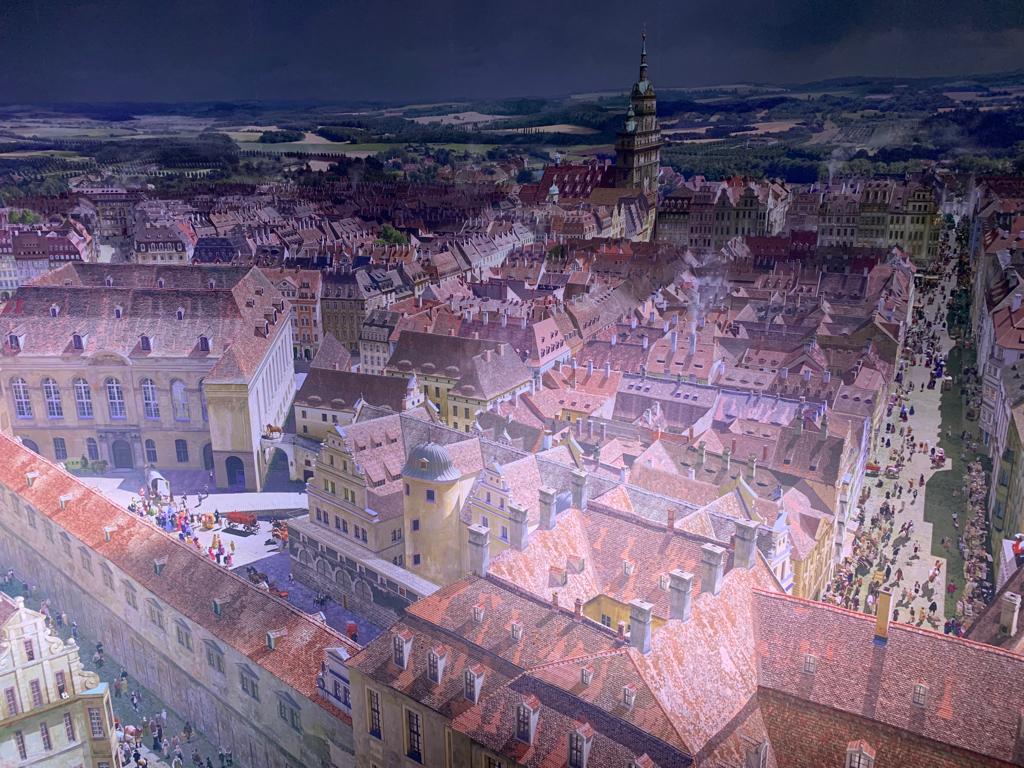
Panometer Dresden
The use of gasometers (or gas holders) has declined due to technological improvements. Once important in order to ensure a constant supply, today the pipe network itself can store gas under pressure. Many gasometers have been dismantled. Others decay in situ. A handful, as is the case here, live on with a new function. The gasometer housing the Panometer Dresden is a particularly attractive example, dating to 1880.
The circular shape of the building and its vast internal space are perfect for a panorama. You come in a main entrance, and buy your tickets at a little booth which also rents binoculars. Then you sweep down a big staircase. Before you reach the panorama itself, there is an exhibition which sets the scene. Since the Panometer Dresden opened the display has alternated between a Baroque panorama of the city, and one which shows the devastation of 1945. Currently on view is a new and improved version of the former. The museum is therefore all about 18th Century Dresden. The exhibition is by the Panometer team themselves, so is notably visual. Bold colours and textures are the backdrop to mostly replica paintings and objects. The few period artefacts are good additions: I’d never seen (or even heard of) a flea trap before, for instance.
And then you get to the panorama itself. It’s immense, with a viewing platform to allow for different perspectives. It cycles through a day and a night in Baroque Dresden, with scenes of famous residents and events. If you can match the scenes on the information panels to the larger version in front of you, you can spot Tsar Peter the Great, strongman Johann Karl von Eckenberg, or even Clara the rhinoceros, who famously toured Europe for many years (poor thing). The detail is incredible. The longer you look the more you spot: a house fire, a funeral, a cat on a church roof. Those binoculars I rented definitely came in handy.
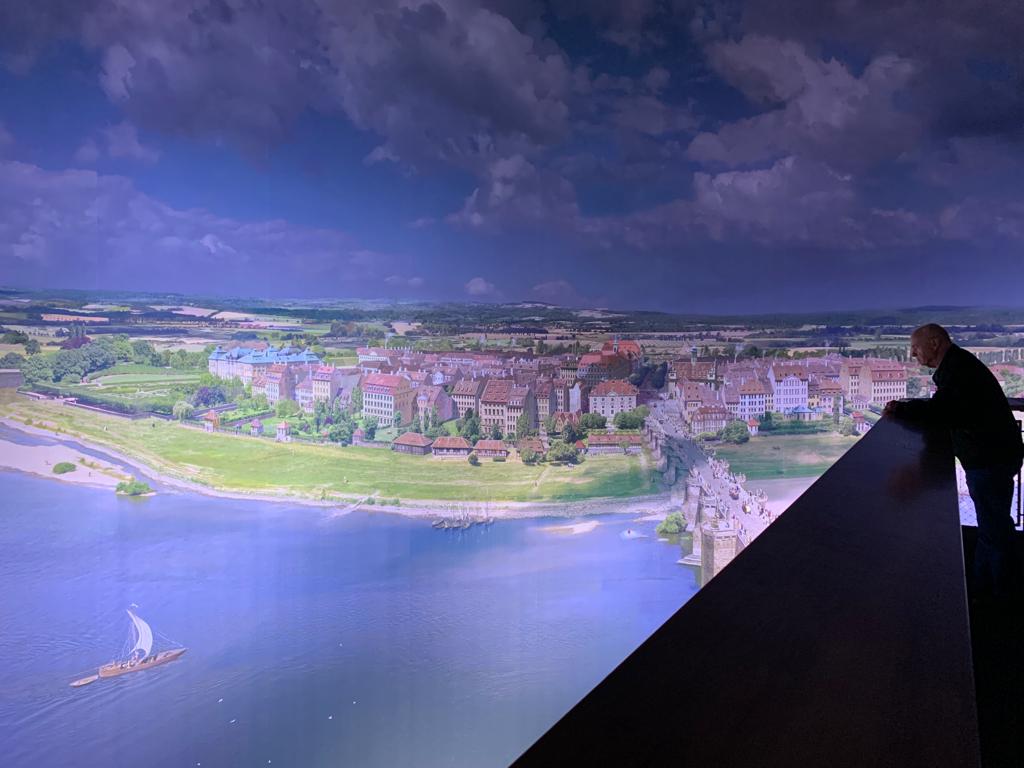
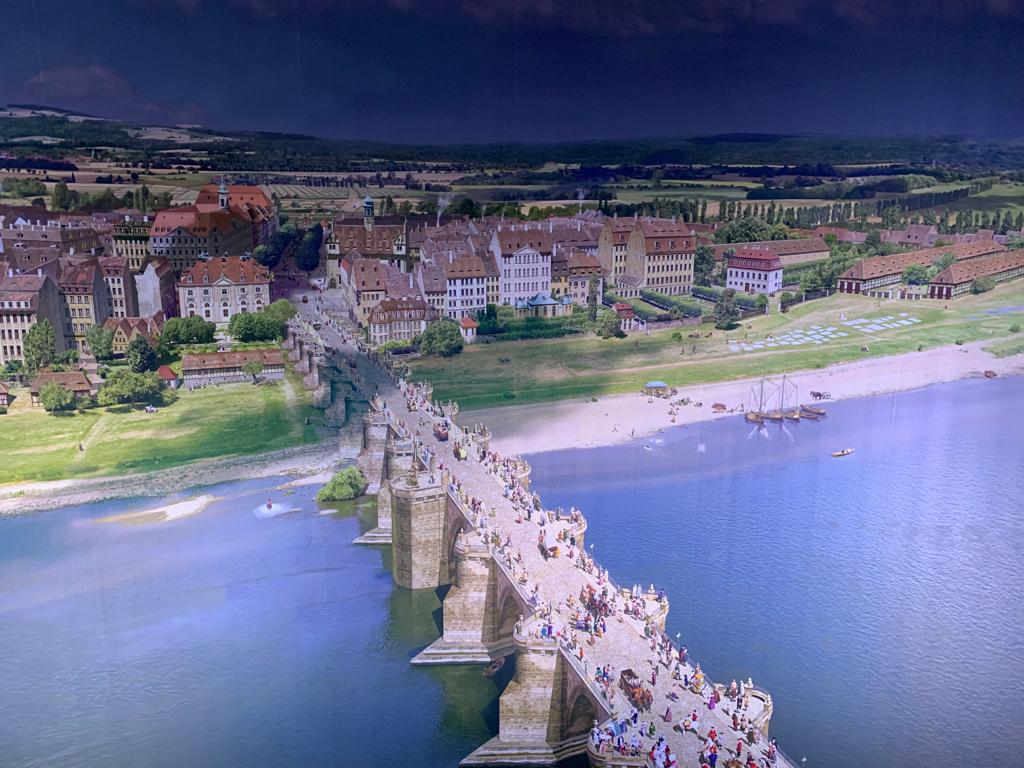
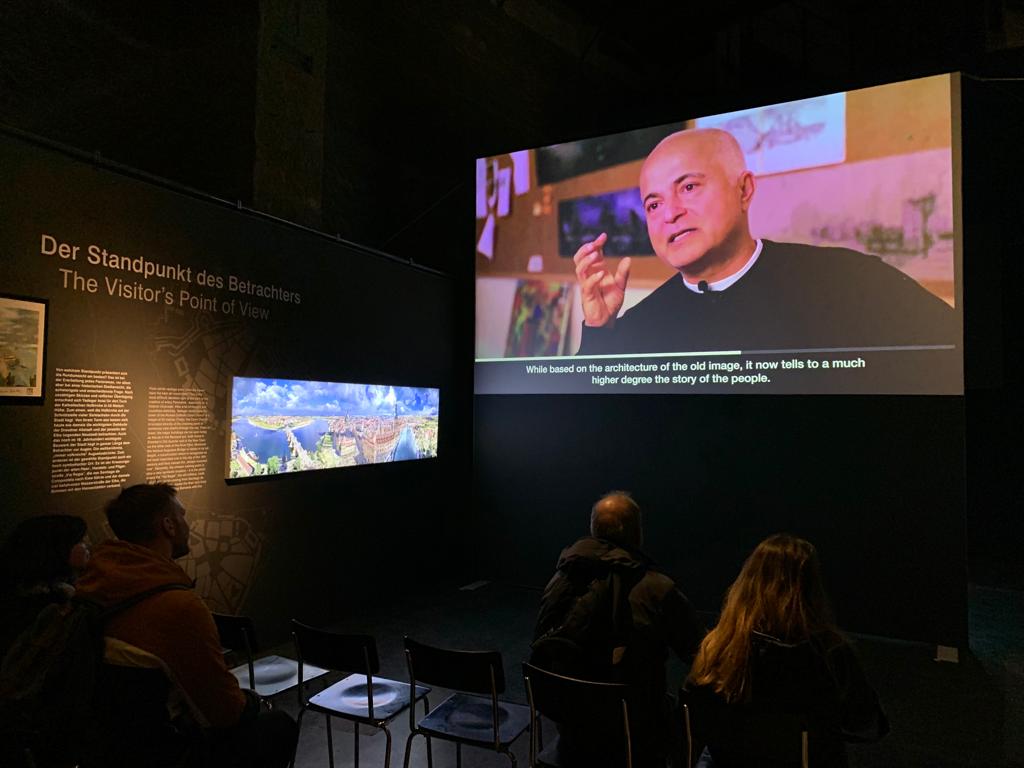
Art Vs. History Vs. Tourism
On the way out after visiting the panorama, there is a final informational section. This is more technical, with information on different views of Dresden over time, and the precise point of view of the panorama. There’s also a video on the process, which I highly recommend watching in full as it’s very interesting. The new and improved version of the Baroque view of Dresden is a lot more detailed than the previous one. Photographs of actors in costume are one source, as are, for instance, Bellotto’s paintings of the 18th Century city. Crowds and building textures along with all the other small details are then painstakingly combined into an aesthetically pleasing whole.
The Panometer Dresden exists at the centre of an interesting Venn diagram. On the one hand, this is history. Dresden is known as a Baroque city, and the Panometer brings to life what it was like when this architecture was new and Baroque Dresden was coming into being. On the other hand, Asisi is an artist, supported by a creative team. Historic details and events are blended and selected for their artistic effect rather than being a didactic tool.
And then there is the third element, which is spectacle. The Panometer is not merely a work of art, it is a destination and an experience. To go back to an earlier point, I travelled outside the city centre just to see it. These forces exist in a balance which makes it an intriguing place to visit. In an age of destination and experiential tourism, Asisi has hit on a successful formula.
I wouldn’t recommend that anyone do as much as I did on a single day in Dresden, but if you do have some time in the city then I think the Panometer is worth a visit. The experience of going there and seeing what’s inside is both a counterpoint and a different perspective on all that Baroque splendour. And if you’re into thinking about different meanings of art and history like I am, then leave some additional time to stop and take it all in.
Salterton Arts Review’s rating: 3.5/5
Trending
If you see this after your page is loaded completely, leafletJS files are missing.

